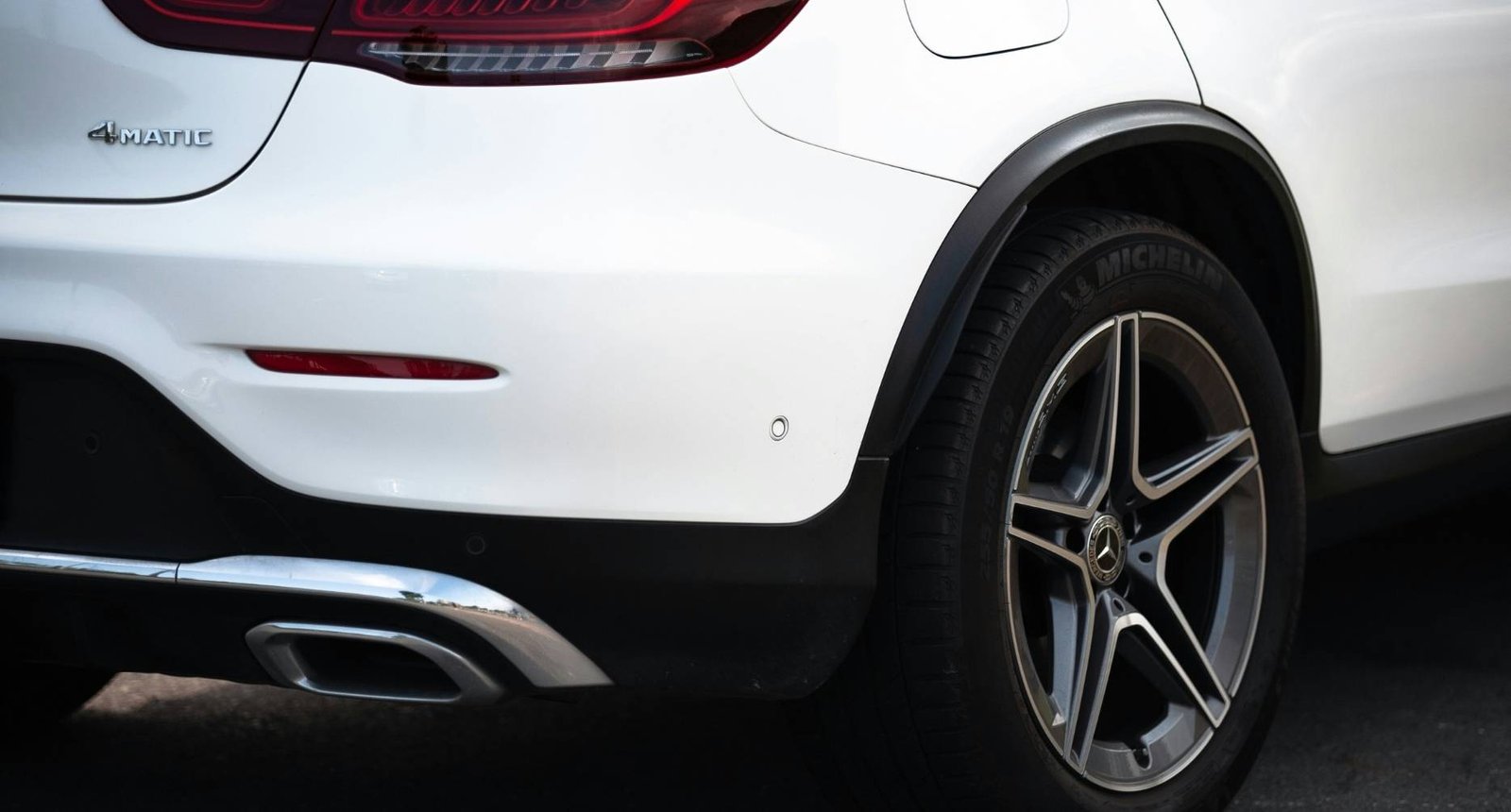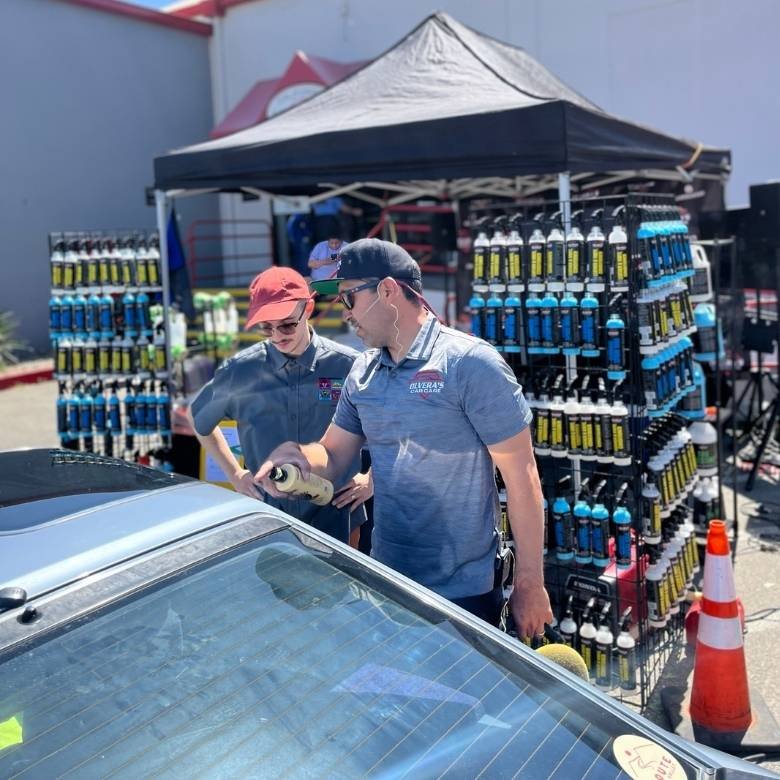Shine and protect your car the right way. Liquid wax is fast and efficient, while creamy (paste) wax is classic and rich, both keep your vehicle looking its best. Choose the style that fits your routine, apply it consistently, and enjoy a finish that always keeps your ride impressive.
The Difference Between Liquid Wax and Traditional Creamy Wax
Protecting and enhancing your car’s finish is one of the most important steps in proper
vehicle care. For decades, wax has been the go-to solution for drivers who want to
shield their paint from the elements while achieving that eye-catching shine. But not all
waxes are created equal. Two of the most widely used products are liquid waxes and
traditional creamy (paste) waxes, both offer very different experiences, results, and
benefits.
At Olvera’s Car Care, we believe that sharing drivers on the differences not only helps
them make better choices but also allows them to understand why certain products
perform the way they do. Below, we break down the characteristics of each wax type,
how they’re best applied, and how modern innovations have made waxing easier and
more effective than ever before.
Liquid Wax: Speed, Convenience, and Modern Performance
Liquid waxes have grown in popularity in recent years, particularly because of their
efficiency and ease of use. Formulated with advanced polymers, natural carnauba,
and in some cases, ceramic-based ingredients, these products deliver strong
protection with minimal effort.
- Consistency & Application: Liquid wax has a thinner formula, often applied as a spray, that spreads effortlessly across paint surfaces. This makes it ideal for quick maintenance after washes and for car owners with busy schedules.
- Results: Liquid waxes create a glossy, wet-look finish that enhances reflections while covering minor imperfections. Many blends also provide UV protection and long-lasting hydrophobic properties, helping water, dust, and contaminants slide off the surface.
Creamy (Paste) Wax: Tradition, Depth, and Richness
Creamy or paste wax remains a favorite among professional detailers and car enthusiasts. Its thicker consistency requires more effort to apply and buff, but the payoff
is unmistakable.
Consistency & Application
Paste wax has a denser formula that allows for precision and depth, giving paint a
richer, more refined appearance—especially on darker colors or older finishes that need
rejuvenation. It is typically applied by hand or with a machine, delivering noticeable
results when a vehicle requires extra attention.
- Results: Unlike liquid wax, paste wax is often favored because it produces a luxurious, high-end finish with greater depth and durability. Its ability to enhance darker shades and bring out a polished, elegant look makes it the choice for enthusiasts who value timeless detailing results.
- Preparation Matters: To achieve the best outcome, proper preparation is essential. Claying the surface beforehand removes embedded contaminants, allowing the wax to bond evenly and maximize both protection and overall shine.
The Role of Tools in Wax Application
In the past, waxing was considered a labor-intensive task that demanded significant skill and patience. However, modern innovations have changed the process dramatically.
Orbital polishers are now available in a variety of sizes, designed to be safe on paint
and user-friendly, even for beginners. These machines create the heat and friction
needed for waxes to properly bond and penetrate clear coat layers—something hand
application alone cannot achieve.
At Olvera’s Car Care, we’ve experienced first-hand how the right tools transform waxing
from a chore into a professional-level result anyone can achieve.
Our Innovation: 1-Step Ceramic Rejuvenator Wax
Drawing from years of detailing experience, we developed our own 1-Step Ceramic
Rejuvenator Wax. This unique formula was designed specifically to:
- Perform in high temperatures without bonding permanently to the paint, making removal smooth and effortless.
- Blend natural carnauba wax with ceramic components, producing a reflective finish with both warmth and modern durability.
- Provide versatility, allowing us to use it in both professional detailing jobs and customer-friendly maintenance routines.
This formulation represents the balance between traditional carnauba richness and
modern ceramic resilience, giving every car we detail that extra pop in reflection and
protection.
Final Thoughts
Both liquid and creamy waxes have their place in professional car care. The difference
ultimately comes down to convenience versus tradition:
- Liquid Wax leans modern—fast, efficient, and durable.
- Creamy Wax leans classic—hands-on, warm, and rewarding.
At Olvera’s Car Care, we know that every driver has different needs, whether it’s
maintaining a daily commuter or perfecting a show-ready classic. The key is
consistency: regular waxing keeps your vehicle’s paint protected, glossy, and
ready to impress—no matter which product you choose.
Quick Comparison: Liquid vs. Creamy Wax
| Feature | Liquid Wax | Creamy Wax |
| Consistency | Thin, sprayable, easy to spread | Thick, dense, applied by hand or machine |
| Ease of Use | Quick application, less physical effort | Requires more time and buffing |
| Shine | Glossy, wet-look finish | Deep, rich, “warm” glow |
| Durability | Washes of faster. | Strong and longer lifespan |
| Best For | Daily drivers, large vehicles, quick maintenance | Show cars, darker colors, older paints |
| Preparation | Can be applied after a wash | Best results after claying & prep |
| Experience | Modern, fast, efficient | Traditional, hands-on, rewarding |





